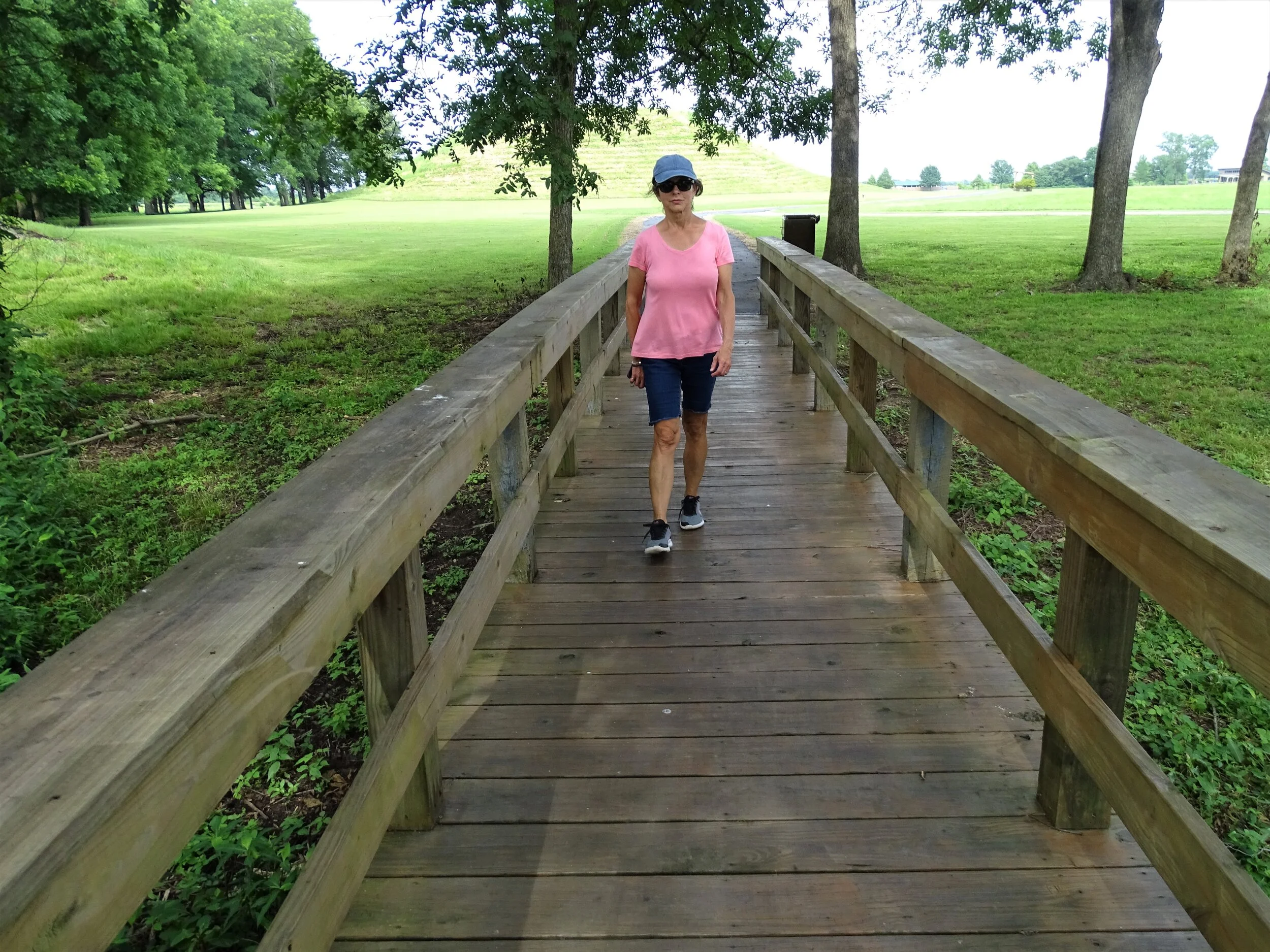Arkansas: Visit Two Parks Near Little Rock to Experience the State’s History
Three of the 18 mounds at the Toltec Mounds Archeological State Park are visible behind these trees.
The Plantation Agriculture Museum is on Highway 165 only 20 minutes from downtown Little Rock. Another six minutes away, you’ll reach the Toltec Mounds Archeological State Park. Both can be toured in a couple of hours, making them an easy half-day road trip from the capital city. They will enhance your understanding of the state’s history from its admission into the Union in 1836 and much earlier as the mounds date back to 600 to 1150 A.D.
The Plantation Agriculture Museum’s main exhibits and gift shop are in the Steele-Dortch Store.
This tractor built in 1910 used a steam engine for power.
PLANTATION AGRICULTURE MUSEUM
The Plantation Agriculture Museum presents the state’s heritage of plantation life and cotton agriculture. You’ll want to begin in the main museum building, which is the Steele-Dortch Store built in 1912. It includes the oldest cotton bale west of the Mississippi River and provides many exhibits about what a cotton farmer would do every year to plant, grow, harvest and sell cotton. The location also includes outdoor exhibits of farm machinery, the Dortch Gin Building (cotton gin) and Seed Warehouse No. 5 with a railroad spur next to it.
The 18 mounds at Toltec Mounds Archeological State Park are visible from a series of paths that provide an excellent self-guided tour of the site.
Linda finds the hiking at the park easy due to the series of trails and boardwalks.
TOLTEC MOUNDS ARCHEOLOGICAL STATE PARK
The remains of a large group of ancient earthworks are a few hundred yards from a highway running through modern farmlands. The Arkansas Department of Parks and Tourism and the Arkansas Archeological Survey manage the park. This teamwork helps preserve this important archeological site while sharing and interpreting it for visitors. Eighteen mound locations have been identified at the site, including the tallest mound in Arkansas. The embankment surrounding the mounds was nearly a mile long and 8 to 10 feet high. The builders used the mounds for political, religious and social activities.
Arla tests her driving skills with an antique rail car at the Plantation Agriculture Museum.
Arla climbs on a massive tractor from the 1920s.
ARLA’S SHOCKING MOMENT
At the Plantation Agriculture Museum, I decided to try driving the farm equipment, but a park ranger spotted me and told me to “get off.” Of course, I politely obeyed, but Doug shot my photo first. I didn’t think any of it would start anyway. It’s all a bit rusty.
This exhibit lets museum visitors know that they have been eating cotton seed oil and probably didn’t know it.
Tractor like this John Deere model from 1934 led to mechanized farming and gradually eliminated sharecropping.
GEE WHIZ FACTS
The Toltec Mounds took their name from the owner of the site from 1857 to 1900. She mistakenly believed the mounds were built by the Toltec people of Mexico. However, archeologists found evidence that these mounds, like others in North America, had been built by ancestors of North American Indians. The name given to these builders is the Plum Bayou Culture.
Tractors entered the agricultural scene in the 1920s and led to sharecroppers being “tractored off the land” because one farmer with a tractor could do the work of several men with mules.
An exhibit at the Plantation Agriculture Museum demonstrates that cotton oil seed is used to make many of the products on store shelves today.
PARTING SHOTS: MORE FROM THE MUSEUM AND MOUNDS
This building is a restored cotton gin and features a variety of equipment inside for handling crops.
These small building were called cotton pens. It’s where cotton was temporarily stored during the harvest before it was taken to a cotton gin.
A boardwalk provides access to the mounds that are near Mound Pond.
Mound Pond provides a scenic addition to the state park and includes a boardwalk for birdwatchers.













